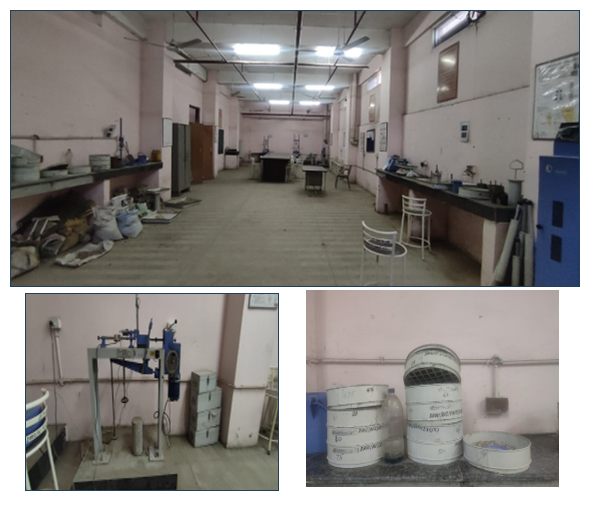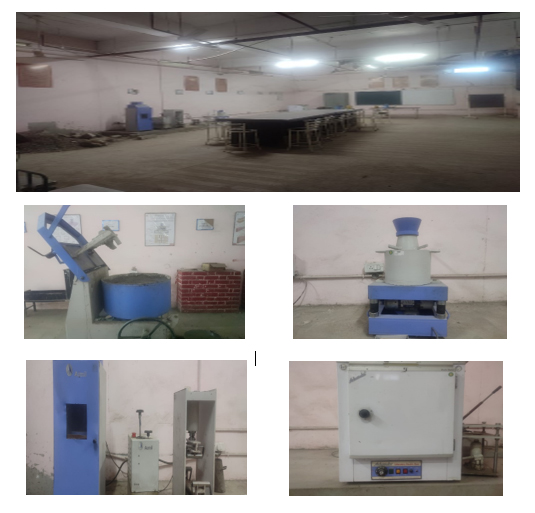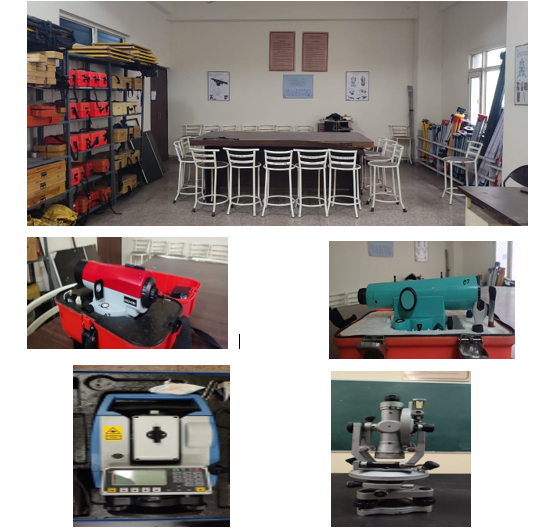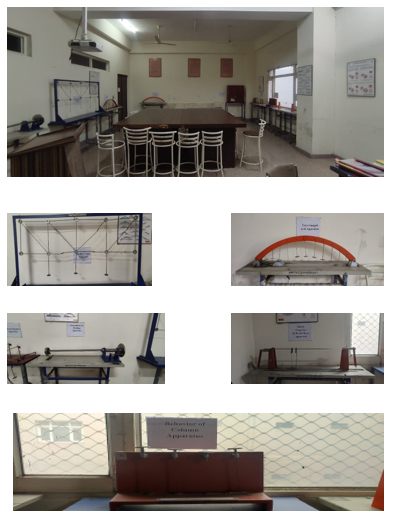Department Laboratories & Infrastructure
- Strength of Material Laboratory
- Transportation Engineering Laboratory
- Surveying Laboratory
- Structural Engineering Laboratory
- Concrete Laboratory
- Fluid Mechanics Laboratory
- Geotechnical Engineering Laboratory
- Environmental Engineering Laboratory




Major Equipment’s:
Concrete and Structural Engineering
Rebound Hammer (Analogous & Digital)
Universal Testing Machine
Compression Testing Machine
Curing Tank
Concrete mixer
Flexure testing machine
Unsymmetrical bending apparatus
Three hanged arch apparatus
Geotechnical & Transportation Engineering
Tri-axial Shear Apparatus
Abrasion Testing Machine
Unconfined Compression Testing Machine
Soil Permeability Test Apparatus
CBR Test Apparatus
Marshall Stability test apparatus
Ductility testing machine
Bitumen extractor Machine
Environmental Engineering
BOD incubator
Ultrapure Water Purification System
TKN Analyzer
MBBR Setup
Atomic Absorption Spectrometer
UV-Vis Spectrophotometer
COD Digester DRB200
Flame Photometer (Elice)
Fluid mechanics Engineering
Tilting Apparatus
V notch apparatus
Bernoulii’s Apparatus
Orifice meter Apparatus
V- notch or Rectangular notch Apparatus
Reynold’s Apparatus
Surveying Laboratory
Total Station
Dumpy level
Auto level
Digital Theodolite
Manual Theodolite
Plane table
Dumpy Level
Prismatic Compass
Chaining equipment
Pantograph
Differential Global Positioning System (DGPS)
Software: Bentley: AUTOCAD 2009, STAAD Pro, STAAD Building Planner, Open Building Plabber, Pro Structures, STAAD Foundation, STAAD Planwin, SCADDS Building Estimator 2005, Open Roads, Water Gems